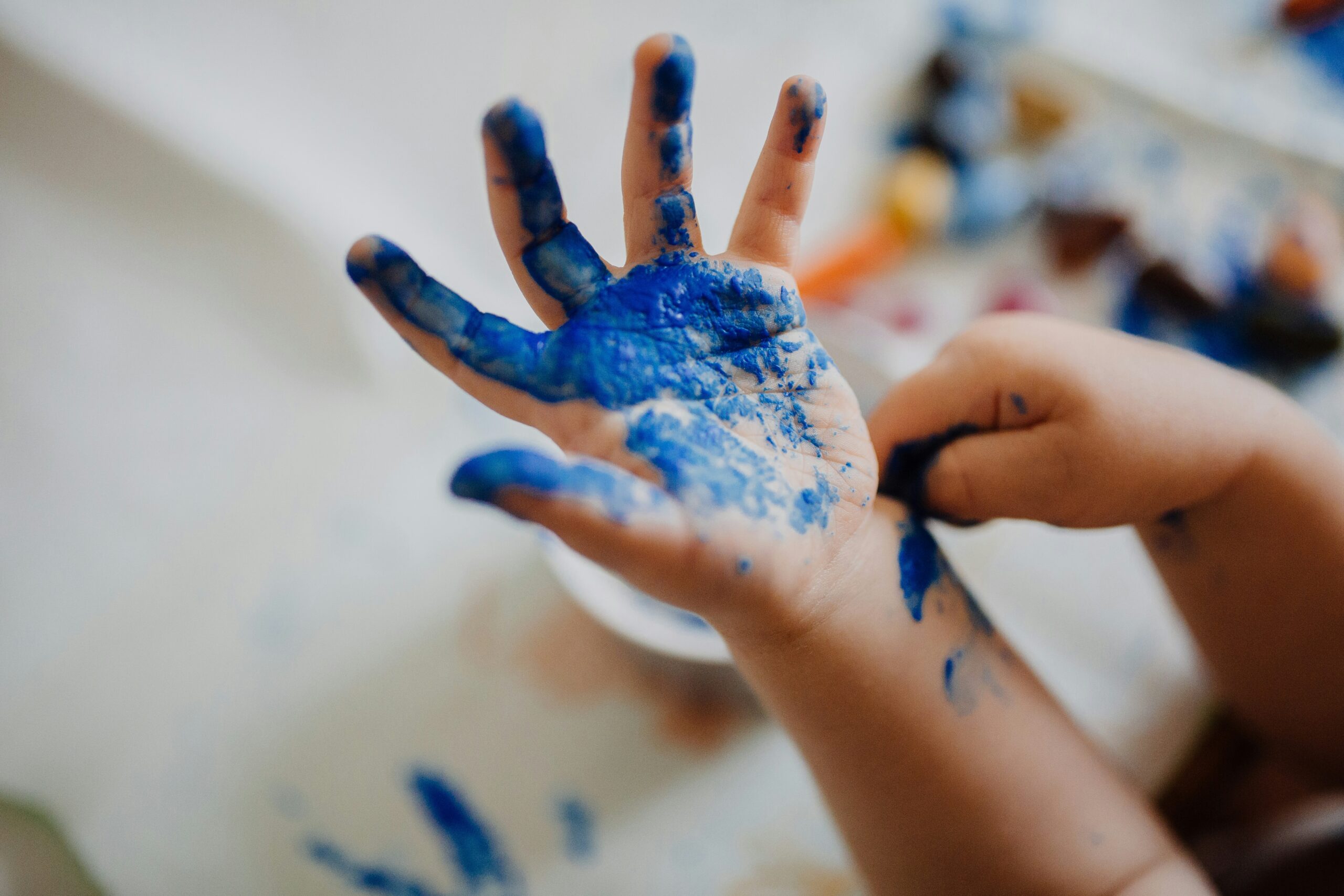Simple Finger Painting Ideas
“Every child is an artist. The problem is how to remain an artist once we grow up.” – Pablo Picasso’s words ring true for anyone rediscovering the joy of tactile creation. Forget what you know about crayons and construction paper—this vibrant medium now fuels professional portfolios and commercial designs.
Textured planner covers, abstract wall art, and licensed patterns prove this approach isn’t just playful—it’s profitable. No brushes required; your hands become tools for blending colors and crafting dimension. Whether you’re decompressing after work or building a unique style, the process rewards curiosity.
This guide walks through everything from choosing non-toxic pigments to mastering pressure techniques that create mesmerizing swirls. You’ll discover how artists transform simple motions into gallery-worthy pieces and product designs. Mistakes? They’re just happy accidents waiting to evolve.
Embrace the squish of cool paint between your fingers. There’s science behind why this method lowers stress—it connects us to primal creativity while engaging multiple senses. Ready to leave perfectionism behind?
Key Takeaways
- Professionals use textured hand-painted designs in art licensing and product development
- Requires minimal supplies: paper, washable paints, and a willingness to experiment
- Layering techniques create depth and movement ideal for abstract compositions
- Acts as both artistic expression and mindful stress-relief activity
- No “wrong” outcomes—each piece reflects unique creative choices
Getting Started with Finger Painting
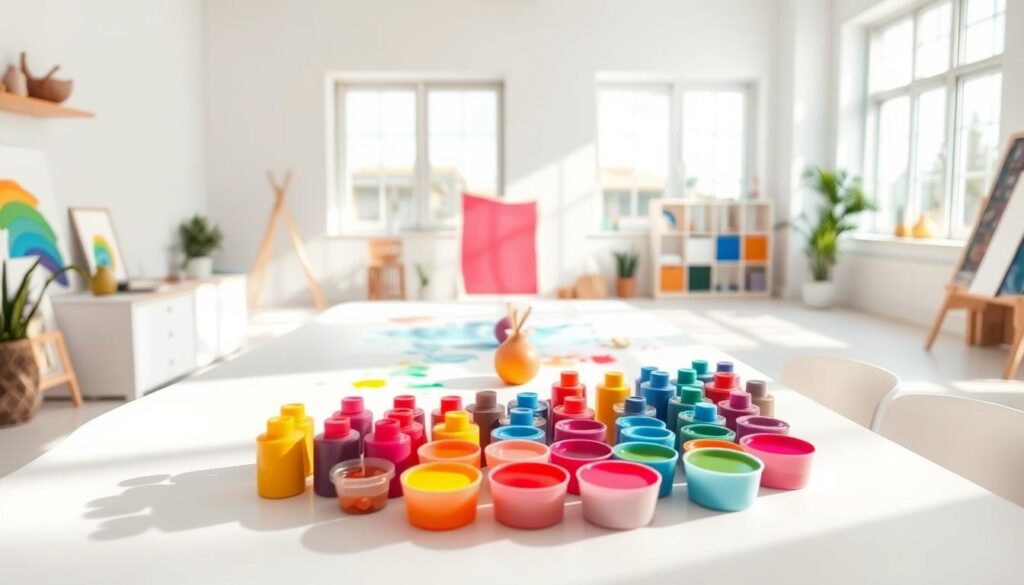
Unleashing creativity through tactile art starts with a well-prepared workspace. Whether you’re crafting bold patterns or delicate swirls, the right setup turns messy play into professional-grade results. Let’s build your toolkit and design a stress-free zone where imagination rules.
Essential Supplies and Setup
Heavy body acrylic paints, like Liquitex Basics, offer rich textures that hold their shape when pressed onto surfaces. Their thick consistency lets you layer colors without muddying details—perfect for building depth in floral motifs or geometric designs.
Experiment with different materials: stretched canvas for gallery pieces, glass panels for temporary works, or basic printer paper for quick sketches. “The best surfaces invite exploration, not hesitation,” says mixed-media artist Clara Benson.
Rubber gloves? They keep hands clean but dull the sensory experience. Try fingertip-only coverage if you want control without full immersion.
Creating Your Mess-Free Art Space
Protect floors with washable tarps and wear old shirts or waterproof aprons. Keep sponges, soapy water, and microfiber towels within arm’s reach—accidental smudges become easy fixes.
Position your work area near natural light to see true color relationships. Open windows or use a small fan to maintain airflow when working with acrylics. Foldable tables let you store supplies between sessions, making creativity a spontaneous part of your day.
Organize paints in labeled jars and keep spare paper stacked nearby. This workflow cuts setup time, so you spend more hours blending hues and less hunting for supplies.
Exploring Finger Painting Techniques
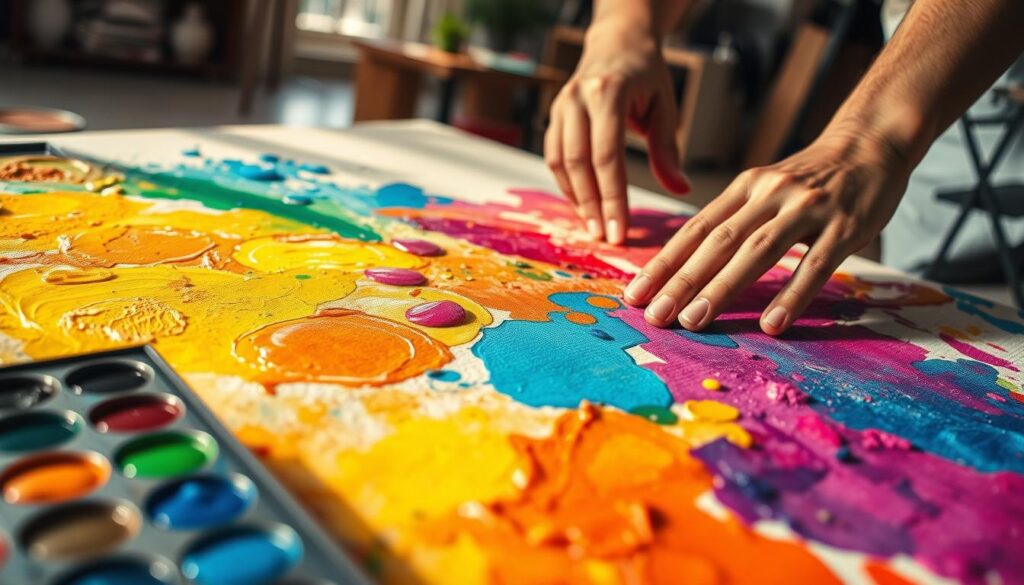
Your hands hold more creative potential than you might realize. By varying pressure, movement, and digit choice, you can craft intricate designs that rival brush-made art. Let’s break down methods professionals use to create stunning textured pieces.
Digital Tools for Diverse Effects
Pointer digits excel at sweeping motions, gliding across surfaces to create seamless backgrounds. Their broad surface area covers space quickly—ideal for sunsets or ocean scenes. Switch to your middle digit for controlled strokes that mimic brushwork, perfect for shaping petals or tree branches.
When precision matters, your smallest digit becomes an artistic secret weapon. Use it to dot constellations in night skies or add texture to animal fur. These intentional marks elevate simple compositions into gallery-ready works.
Building Depth Through Pigment Play
Thick acrylic layers create tactile ridges that catch light beautifully. Apply generous dollops and press firmly to leave lasting impressions. For blended gradients, work quickly with wet-on-wet colors. Blues and yellows merge into vibrant greens when swirled before drying.
Experimentation unlocks surprising results. Try dragging knuckles through fresh paint for organic lines, or stamp palms for bold abstract shapes. “The most compelling textures often come from unexpected moves,” notes muralist Diego Marquez.
Mastering Movement and Mixing
Vary pressure during strokes to create tapered effects. Start with heavy pressure for bold beginnings, then lighten touch as you pull away. This technique produces dynamic strokes perfect for grass blades or hair strands.
Combine techniques for maximum impact: smooth backgrounds under detailed foregrounds, or blended skies above textured landscapes. Remember—acrylics dry darker, so test color mixes on scrap paper first.
Finger Painting: Tips and Tricks for Beginners
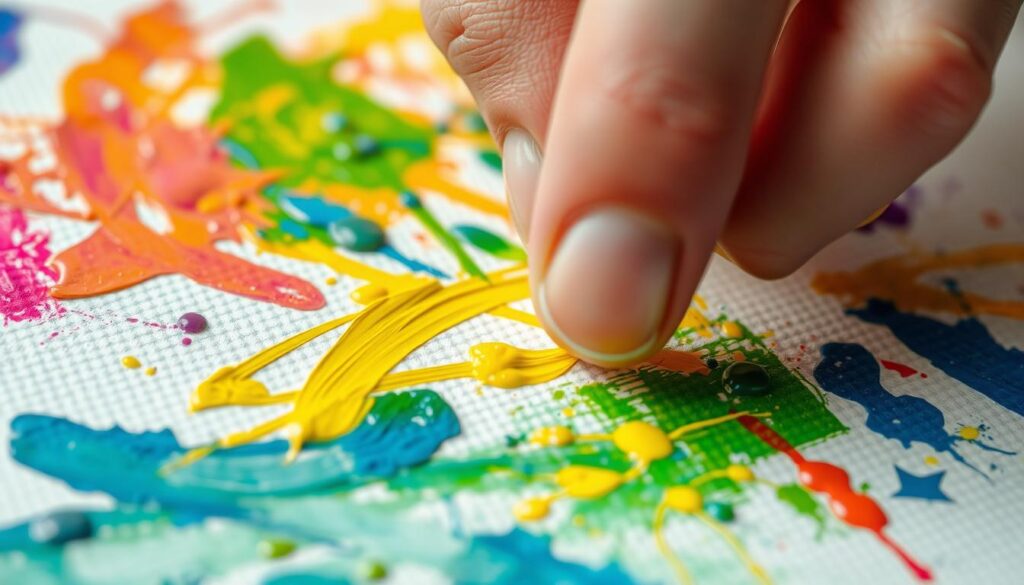
Discovering your artistic voice becomes effortless when you prioritize joy over precision. This hands-on approach thrives on spontaneity, where every smudge tells a story and color combinations reveal hidden preferences.
Choosing a Happy Composition
Start with subjects that spark delight—dancing butterflies or swirling galaxies. Nature-inspired motifs work wonders for beginners, offering familiar shapes that guide your movements. Abstract designs let you focus purely on color relationships and rhythmic patterns.
Mix primary hues to create custom shades that reflect your mood. Squeeze lemon yellow into cerulean blue for tropical waters, or blend magenta with white for dreamy sunsets. These personalized tones make each piece uniquely yours.
Developing Texture Through Creative Play
Vary paint thickness to add dimension—thin washes create transparent layers, while thick globs form raised ridges. Try this: load your index finger with pigment and dab rapidly to build dotted textures resembling starlight or raindrops.
Alternate between light touches and firm presses during strokes. Gentle swipes leave whisper-thin trails, while deep presses produce bold, expressive marks. Remember—there’s no “undo” button here, which oddly becomes its greatest strength.
Keep baby wipes nearby for quick cleanups between color changes. This simple trick maintains creative flow, letting you experiment freely without worrying about mistakes. As textile artist Lila Chen observes: “The best textures emerge when you stop planning and start responding.”
Engaging Both Adults and Children in Finger Painting
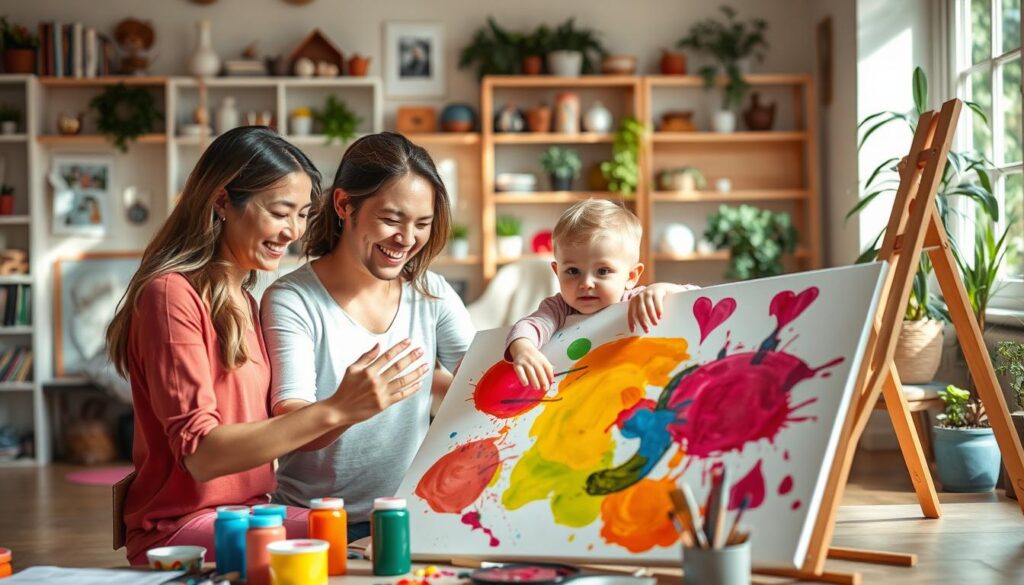
Shared creative experiences bridge generations while meeting different needs. This tactile medium offers unique opportunities for growth and connection, whether you’re guiding tiny hands or rediscovering your inner artist.
Building Foundations Through Sensory Discovery
Young artists develop essential skills through color play. Hand-eye coordination improves as children press palms against paper, while finger movements strengthen muscles needed for writing. Cool, squishy textures stimulate neural pathways, helping kids process sensory information effectively.
Adapt activities by age: guide toddlers’ hands through paint puddles, let preschoolers mix primary colors, and challenge school-age children to create story-based scenes. Each stage builds confidence through achievable challenges.
Releasing Adult Creativity Without Limits
Grown-ups often rediscover joy in unscripted art-making. “Letting go of outcomes transforms the process into meditation,” explains art therapist Mara Simmons. Thick layers and bold strokes become stress-relief tools, while experimental techniques spark new perspectives.
Family sessions thrive when everyone works on shared canvases. Parents might blend backgrounds while children add whimsical details. This collaborative approach celebrates individual contributions without comparison.
Conclusion
True artistic freedom lives where rules dissolve into pure creative flow. Through this guide, you’ve discovered how simple texture-building techniques and intentional color play can transform basic supplies into gallery-quality work. Remember—your best pieces emerge when you prioritize discovery over precision.
Whether blending layered skies with your palms or crafting delicate dots with fingertips, each stroke carries potential. Professional artists and weekend explorers alike find value in this tactile approach. It bridges studio practices with stress-relief, offering mindful moments that digital tools can’t replicate.
Keep experimenting beyond these methods. Mix unconventional surfaces with your favorite pigments, or document your progress through blog posts and short videos. Share creations with local art groups or online communities—your unique style might spark someone else’s breakthrough.
Most importantly, let every smudge and swirl remind you why we create: not for flawless outcomes, but for the joy found in making. Your hands already hold everything needed to begin anew. What will they shape next?
FAQ
What are some easy finger painting projects for beginners?
How do I set up a mess-free art space?
Can I create texture without brushes?
How can I make finger painting fun for kids?
Is finger painting only for children?
What if I’m not “good” at art?

Adam Peter is a finance, travel, and automotive writer with over a decade of experience. He creates clear, practical content to help readers manage their money, explore the world with confidence, and make informed decisions about cars and travel gear. His work blends expert insight with real-world usefulness.

